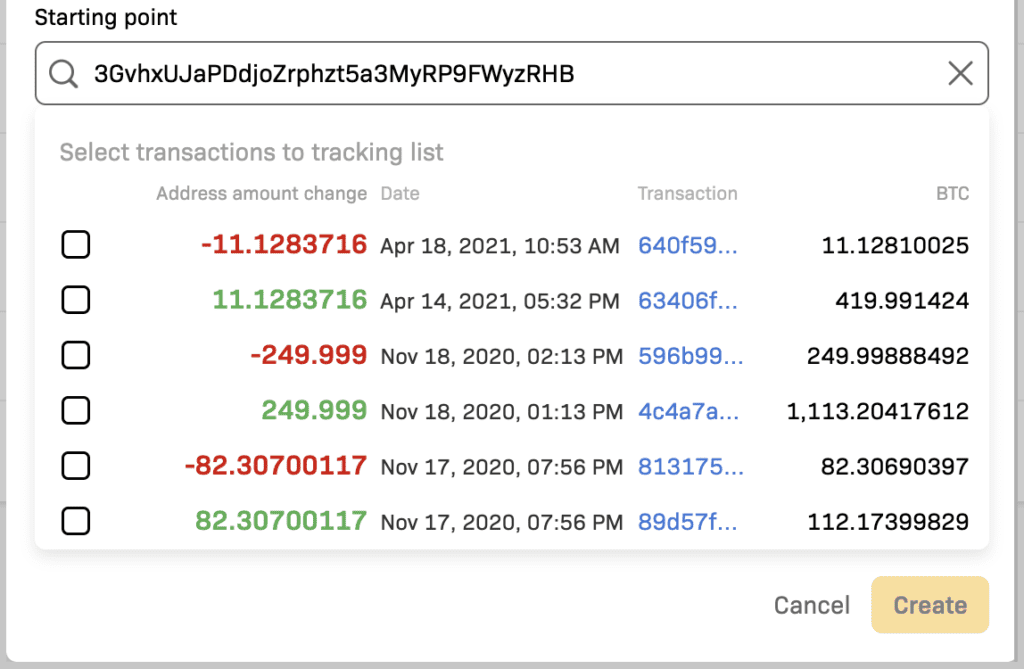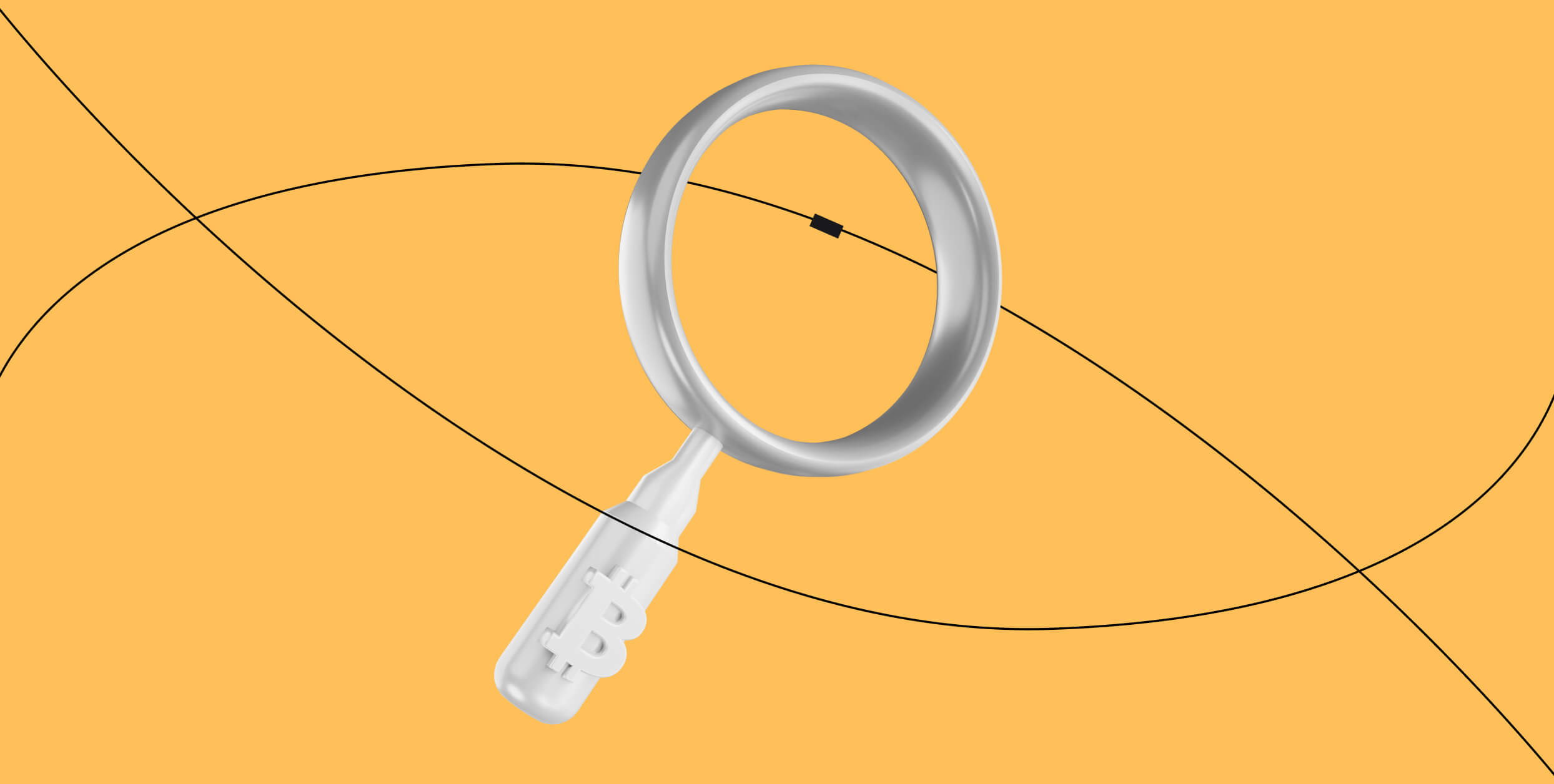As crypto adoption in today’s digital economy grows, there is an increasing need to build a safe financial system for all industry stakeholders, including operators, builders, investors, and regulation. This can be achieved by providing in-depth visibility and transparency into activities happening across blockchain networks.
At Crystal, we built a best-in-market blockchain intelligence and tracking solution to achieve this. The crystal tracking tool helps you link cryptocurrency activities to real-world entities, easily track the flow of digital assets, and identify suspicious transaction patterns for quicker intervention.
Why use the Crystal blockchain tracking tool?
Our automated tracking solution allows you to trace the flow of digital funds through dozens of intermediate wallets before reaching the destination wallet. Whether the assets are moved through exchanges, mixers, gambling services, darknet marketplace, or other criminal-related entities, Crystal helps you drill down the transaction paths and take decisive actions.
Below are some of the many reasons why our users love using the Crystal tracking tool:
- Extensive coverage – We support tracking for a wide range of digital assets, including BTC, BTC, BSV, ETH, ETC, and LTC.
- Deep analysis of the crypto landscape – We profile thousands of entities, including global exchanges, ATM mixers, gambling services, and assign average risk scores to transactions.
- Ease of use – Crystal has a super-intuitive interface that facilitates deep analysis of transaction flows by users of all kinds.
- Leverage updated crypto data – We maintain a massive database of crypto transactions, sanction lists, and other crypto activities to ensure you are screening updated information.
- Case management – Our platform has an integrated case management tool that provides a convenient way for performing and collaborating on investigations.
How do I use Crystal’s blockchain tracking solution?
The Crystal tracking tool allows you to track a set of transactions and understand the path followed by funds as well as their final deposit wallet. It has four main sections: the tracking set up, table of tracking results, tracking paths, and tracking list.
1. Tracking setup
The tracking setup allows you to create a new tracking. On the Crystal dashboard, open the tracking tab and select the “create new tracking” button. This will open up a new pop-up window where you can enter the tracking details. As shown in the screenshot below, the required input fields are currency, asset, label, starting point, minimum relative increase of address’s balance, minimum sum received by an address, and the user’s email address.

The starting point field is where you provide the transaction hash or address hash to track. When you enter the transaction hash, it is automatically added to the tracking list. When you provide a valid address, Crystal will provide a list of all transactions for that address. The list has checkboxes where you can mark up to ten transactions that you want to track.

After providing all the required details and clicking the create button, Crystal will provide a confirmation that your tracking setup was successful. The tracking results may take a few minutes to appear on the dashboard, depending on the number of transactions you are tracking. Once the results are ready, the page will automatically reload, and you will receive an email notification.
2. Table of tracking results
The table of tracking results shows the addresses that received some or all of the assets in the tracked transactions. However, only addresses that satisfy the conditions defined in the tracking setup will appear.

The table of tracking results shows all transactions in the tracking list, the addresses involved, amounts transacted, address owner, current balance, type of service, and the risk score.
On the tracking results dashboard, you will also find the transaction path, which represents the chain of transactions linked to the transaction you are tracking. Next to the transaction path is the length, which stands for the number of transactions in the path.
If you’d like to filter the information view in the tracking results, you can remove transactional addresses or group the results by owner or addresses. The tracking tool also allows you to update the tracking by adding new transactions and export the tracking results in CSV/PDF format.
3. Tracking paths
The main path on the Crystal tracking tool is a sequential string of wallet addresses that shows how assets in the tracked transaction were moved from the source to the receiving address.
Below the main tracking path is a switch that allows you to turn visualizations off or on if you’d like to visualize the asset flow path of a transaction. You can also zoom the visualization or even save and export the graph as an SVG file.

4. Tracking list
If you had some previously created tracking instances, they will appear on the tracking list. From the list, you can see all trackings alongside the addresses involved, assets, tracking status, date created, and date updated. You can also delete a tracking, edit its label, or open it by clicking on the name.

Ramp up your blockchain tracking and investigations with Crystal
Crystal provides an advanced blockchain tracking solution to help crypto services, financial institutions, regulators, and public agencies trace and uncover crypto transactions. We empower teams to detect, investigate, and reveal solid evidence when managing crypto-related crimes.
Don’t have Crystal backing your crypto tracking and AML compliance initiatives? Get in touch with our support team today at [email protected] and learn how our best-in-class solutions can help your track and visualize digital asset trails. We will be happy to schedule a demo, answer your questions, and get you started.




